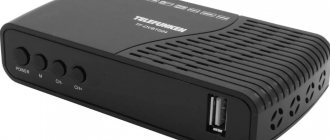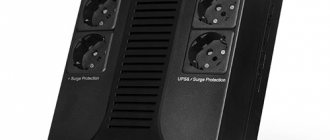When choosing headphones, the buyer wants to get a device with clear and pleasant sound. But for this, before purchasing, they study all the parameters. The impedance of the headphones plays an important role - this is an indicator of the total input impedance of the gadget. The user will have to learn how the operation of an entire acoustic system depends on the resistance indicator, what it affects, what value the impedance should have depending on the characteristics of the sound source.
What is headphone impedance in simple words
In practical terms, impedance is the total resistance measured at the gadget's input. This definition is given by Wikipedia.
Each acoustic device, as well as a smartphone, a computer with built-in speakers, and a home theater system, has an amplifier at the output. It generates fluctuations in the output voltage. They cause the speakers to emit output waves. For different types of devices, the output voltage indicators differ. Headphones are connected to this technique. For normal operation, they must have a specific value of reactive and active resistance for various frequencies. Impedance is the average of a combination of these numbers.
Whether a person listens to vocals or instrumental music, or uses wireless models for sports, modern headphones adjust to the required volume due to impedance. It affects their sensitivity, and therefore their volume.
What is the difference between resistance and impedance
The term “impedance” is not used as a synonym for the term “resistance”. These are different concepts. The resistance of the device, which is indicated in the technical documentation, is active resistance (or resistive). While impedance is the combination of active and reactive resistance (also called total).
Manufacturers, as a rule, do not indicate the value of this indicator in the documentation. Impedance must be measured separately.
What does headphone impedance affect?
The magnitude of the impedance is reflected primarily in the sensitivity of the headphones. Users believe that sensitivity equals volume. If we are talking about speakers for a PC, then this approach is justified, because the resistance is either 4 or 8 ohms. The power of the amplifier is indicated accordingly, and the relationship between these indicators is visible.
But headphones are a device that has a number of technical features and a large range of resistance values. The relationship between the indicators is not so obvious. But high impedance eliminates signal distortion and, indirectly, the volume level.
Specialists lead the impedance indicator to power, while voltage and current are taken into account simultaneously. The lower the impedance, the higher the sensitivity of the headphones. And vice versa - high resistance means low sensitivity. This indicator also affects electric current consumption. But this is in theory. The consumer must understand what sensitivity of the device is needed and how resistance affects it.
Here's what you need to remember:
- Impedance does not affect volume, but sensitivity, as well as the maximum battery life of a smartphone, tablet or player. When connecting to a home theater or computer, there is no talk about battery life.
- Sensitivity reflects the difference in volume levels as the input signal changes.
- The higher the sensitivity, the louder the device sounds. This applies to microphones, speakers, and subwoofers.
- Not every manufacturer provides a specific sensitivity value. But reputable companies indicate it either without units of measurement, or in the form of a ratio of frequency and power.
- When a consumer changes the volume on an amplifier or sound source, he does not change the power, but he adjusts the output voltage level.
- Impedance level also affects sound quality as it can remove distortion. This applies to car audio, smartphones, and other sources.
- The resistance of the headphones affects the amplitude-frequency characteristics of the model. If it is increased, wave distortion is reduced and uniform characteristics can be achieved.
How does impedance affect sound quality?
In general, the effect of impedance follows the described rules. But there are also certain caveats that should be taken into account.
While impedance affects battery life, it is not the only factor that reduces battery life. The quality depends on the volume at which the user listens to music, and how much power is required to maintain operation in this mode. In addition, you need to consider the quality of the headphones themselves. The better the sound insulation, the less volume is required. Therefore, even with a high impedance, but when using closed-type models, the smartphone or player will work longer.
It can be concluded that:
- Single-driver armature-type headphones have a higher average resistance than other types. With them, battery life will be longer.
- Multi-driver headphones are produced with lower resistance. With them, the smartphone needs to be recharged more often.
Resistance affects the presence or absence of distortion. But the characteristics of the amplifier also play a role. If it can't supply the rated current, or the filter capacitance isn't up to par, distortion will still occur, no matter what the impedance or sensitivity of the headphones is.
Experienced acousticians say that slight distortion is inevitable. The human inner ear is designed in such a way that it itself becomes a source of distortion. For example, a person always hears the sound of stringed instruments with certain distortions.
The range of the auditory nerve is about 60 dB. So the user will not be able to hear most of the external distortions. Linear distortions resulting from changes in amplitude can interfere. And this is where impedance helps smooth them out.
Why do we need different resistance values for different models?
Different types of headphones differ in the quality of sound production: high-impedance ones sound a little better. But the point here is not the resistance as such, but the fact that the amplifier sends less current, and therefore distorts the frequency signal less.
For portable devices - smartphones, MP-3 players and tablets - it is better to choose low-impedance headphones. If the headphones will be used at home, for example, connected to a PC or sound card, high-impedance models are suitable.
The fact is that portable devices have a limited voltage level at the output, but there are no restrictions on the current. Because of this, you can “boost” the gadget in order to squeeze maximum power out of it only with low-impedance headphones.
What is the impedance of different types of headphones?
These devices are divided into two types - full-size and in-ear (small headphones, in everyday life they are called “plugs” or earbuds). Within each group there is an additional division. Full-size headphones are divided into low-impedance (impedance up to 100 ohms) and high-impedance (impedance above 100 ohms).
In-channel gadgets are also divided into low- and high-impedance, only the numbers will be different - up to 32 Ohms (they produce standard versions with 16 and 24 Ohms) and more than 32 Ohms, respectively.
Manufacturers usually indicate the impedance value in average form. But for in-channel models it usually corresponds to reality. But for dynamic full-size gadgets, a big difference is possible, since the value depends on the position in space, and the same device may be characterized by resistance rises in the range of 32-64 Ohms. Much depends on the specific product, its design, housing features, etc.
But this does not mean that you should necessarily look for full-size dynamic headphones with a straight impedance line. Often, to achieve this indicator, the manufacturer reduces other characteristics. In top-class models, there may be devices with large deviations in impedance values. You need to take this into account when purchasing and select a model so that it matches the resistance of the amplifier.
Wireless headphones can also be full-size or in-ear. The required level of resistance corresponds to the given rules.
There are also hybrid headphones equipped with dynamic and armature drivers. They can also be low- and high-resistance, but they are characterized by significant jumps in resistance at medium and high frequencies, so choosing them is more difficult.
Impedance on different types of headphones
The impedance listed on the box is not always an exact number, and the impedance varies depending on the type of headphone driver. For example, if you compare the frequency response of headphones at different frequencies, it should be like this:
- in-channel, dynamic and isodynamic maintain the specified resistance throughout the entire curve at a resistance of 16, 24, 32 Ohms;
- full-size models and overhead models with dynamic drivers have uneven resistance rises from 32 to 64 Ohms. This depends on the position of the headphones in space (lying on the table, worn on the head), the design features of the case and the emitter;
- armature or hybrid headphones have noticeable jumps in the mid and high frequencies, which is fundamentally different from the specified characteristics. This is also a design feature of armature drivers and explains their high sound quality when it comes to mid and high frequencies.
As for wireless models, their impedance plays a similar role as in the case of wired options. The main aspect to choose the right model will be support for codecs for transmitting high-quality sound via Bluetooth. These include aptX/aptX HD and LDAC. An additional boost to the sound is provided by the device from which music is played, the installed media player and the audio format.
So, to summarize:
- high-impedance headphones are worse in terms of maximum volume, but consume less battery power;
- for smartphones or non-professional MP3 players, the best choice will be earbuds and plugs with a resistance of 16 or 32 Ohms; they will not be able to reveal the sound of models with 50 Ohms or more due to insufficient output voltage;
- Impedance alone is rarely responsible for the final quality; the type of emitter, frequency range, sensitivity and type of headphones should be taken into account.
How to measure headphone impedance?
Sometimes the procedure for measuring the indicator is mistakenly called impedancemetry. But it's actually the name of a diagnostic medical procedure. And for headphones, a standard resistance measurement is carried out. To obtain detailed relationships and graphs, a laboratory bench and special software will be required.
Impedance is measured in Ohms. But this does not mean that it can be determined using an ohmmeter. This is only an assumption, as if a resistor is connected to the electrical circuit instead of a real load. If the headphones are connected to a computer, then the measurement is performed by its sound card using special software.
The consumer should be aware of active resistance. You can find out how much this indicator is using a multimeter - this is a budget device that can be easily bought in an online store or borrowed from an electrician.
What is the best headphone impedance?
This parameter is selected depending on which device the headphones will be connected to. For example, if it is a smartphone or laptop, then people with experience recommend buying models with an impedance value of no more than 50 Ohms. No longer necessary, since compact devices like a phone or tablet cannot provide high volume levels and adequate power.
If a consumer chooses a gadget for a smartphone, then they will have to assume that a resistance of 22 ohms will produce louder sound. The model with an impedance of 32 Ohms gives a quiet sound. But the music will play 25% longer (approximately) compared to the first example.
To connect to a computer, you need models with a value of at least 50-60 Ohms. Such high-impedance headphones can even be connected to a music center. Experienced people recommend checking the sound quality and volume before purchasing such models. To do this, the headphones are connected to the device with which they plan to be used in the future. Models that provide clear sound are not necessarily expensive; they can be products with average performance, but reliable assembly,
If specific instructions are given by the manufacturer of the speaker or smartphone, it is better to follow them. Headphones with a high impedance mean increased energy consumption, but are better protected from short circuits or overheating.
The volume level of the device is affected by sensitivity. The indicator depends on the impedance of the headphones. Therefore, when choosing a model, you need to check or measure this energy consumption indicator yourself.
Which headphone impedance is best to choose in different situations?
Since various players, smartphones and other sound systems use a certain rated power, before purchasing you should know how many ohms should be in the headphones for certain needs. We invite you to consider several of the most common options.
Unfortunately, it is not possible to visually distinguish high-resistance models from low-resistance ones, only by ear and according to the specification
Optimal impedance in headphones for a phone, audio player or laptop
If you are going to listen to music or watch movies and TV series using a smartphone or compact laptop, then it makes no sense to take headphones with an impedance value exceeding 50 Ohms.
Firstly, a low volume level will not allow you to fully enjoy every note of your favorite songs. Secondly, compact devices in some cases will not be able to provide such high power - you will understand what exceeding Ohms in headphones means when the device stops working at the most inopportune moment.
Low-impedance (only 8 ohms!) “ears” of the AKG K3003 will allow you to get the most out of your gadget, but high loads will quickly damage them
AKG K3003
What headphone impedance is best for desktop PCs, music systems and professional work?
Unlike their portable counterparts, larger devices with a corresponding audio amplifier offer significant capabilities and performance. In this regard, it is better to use headphones with an impedance below 32 Ohms on such equipment with caution: the likelihood is too high that the device will clearly show you what it means to not follow the rules for choosing resistance in headphones, causing a short circuit or other serious damage.
But if the packaging and specifications show a resistance of 50-60 Ohms or higher, you can safely use such a high-impedance device with a music center or gaming PC.
The ultra-powerful, iconic Sennheiser HD800 with a stunning 300 ohm impedance will provide an unforgettable experience for any user
Sennheiser HD800
NOTE!
Headphones with a high impedance value, although they require a lot of energy, have a high degree of protection from short circuits, overheating or other unexpected damage.











